
Avellon Williams
KINGTON, JAMAICA- “Maroons” in the “Blue Mountain of Jamaica” are remembered during Black History Month.
The Maroons were forced to flee their Spanish-owned plantations when the British invaded Jamaica in 1655 (Dunkley 2013, p.154).
The Maroons are descendants of African slaves who escaped enslavement in the 17th and 18th centuries in Jamaica. Maroon is derived from the Spanish word ‘cimarrones’, which means “mountaineers”. They are also known as “escaped slaves”, or “fugitive slaves”.

The Maroon communities were not only formed by Africans who escaped slavery but also by those who had never been enslaved.
As a result, they ran away to the mountains of Jamaica, where their owners had difficulty following and catching them. As free people, they formed independent communities nestled in the Blue Mountains region of Jamaica, where they preserve their African culture and language. The Maroons are one of the oldest ethnic groups in Jamaica.
With the increased number of slaves imported from Africa to work on the developing sugar plantations, and the growth of enslaved Africans in Jamaica, more slaves rebelled. Slaves who rebelled fled into the mountains and joined the Maroons.
In response to the rising Maroon population, the Jamaican government decided one day to wipe out the Maroons for good. In the eyes of the government, they considered the Maroons a constant threat.

In 1728, the first maroon war broke out. Maroons grew more ferocious than ever because they were the target of a fierce campaign. During this time, they fought back under a fierce Leeward Maroon leader, Cudjoe.
A peace treaty was reached in 1739 between the British and the Maroons (Carey 1997, p.344) The Maroons were granted their land, and their freedom was acknowledged. As a result of a divide between the Windward Maroons, another treaty was signed a year later by Nanny, perhaps the most celebrated leader of the Moore Town Maroons.

Both the Leeward and Windward Maroon Treaties served to grant the Maroons freedom to pacify them, and remove a major obstacle to the institution of slavery that the British created.
In return, they would aid the British government in Jamaica against foreign invasions as well as capture and return runaway slaves and slaves who rebel against their owners. The Maroons were able to maintain peace with the island’s government through this agreement, which may seem weird in retrospect.
Peace reigned in Jamaica for many years between the Maroons and the British.
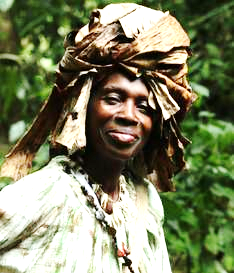
It was not until 1795 that the new Governor of Jamaica, Balcarres, addressed some minor breaches of the peace treaty by a group of Maroons named the Trelawney Town Maroons.
During this time, the Trelawny Town Maroons had mounting grievances against the British.
However, it was the flogging of two Maroons, who were convicted of stealing pigs by a runaway slave they had given to the authorities according to one of the articles of the Treaty that triggered the war. These maroons, it is believed, were angered by the conviction and punishment, since they viewed it as their responsibility to punish the accused.
They also felt unjustly humiliated as the flogging was inflicted by a runaway slave they had surrendered to the authorities (Sherlock and Bennett 1998, p.145). The British authorities tried to quell the rebellion by meeting with the Maroons, but this failed as the Maroons proved dissatisfied with the demands of the British.
For the sake of maintaining the town’s peace, they deemed an agreement with the Maroons necessary.
Contrary to the governor’s advice, several of the leaders of Trelawney Town were arrested. A second Maroon War ensued in 1795.
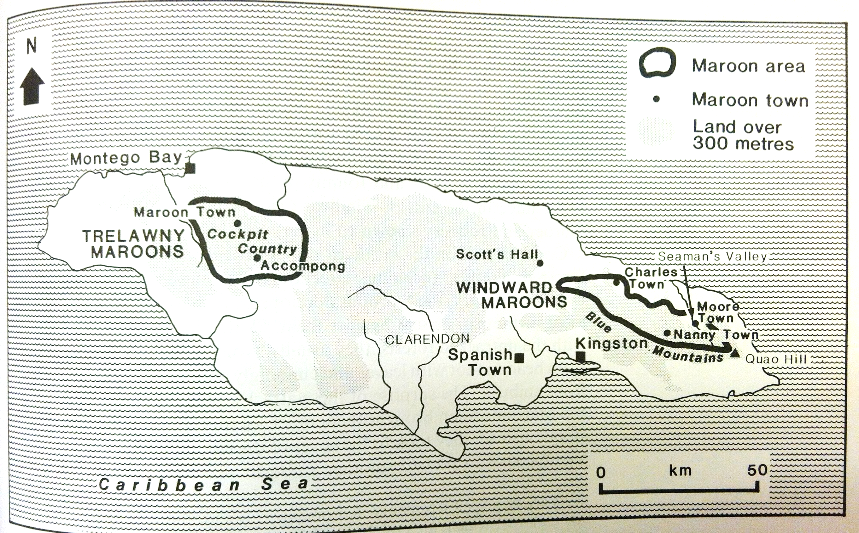
A Maroon force of 300 held out in Trelawney Town against 1500 troops and 3000 local volunteers. An agreement for peace was offered to the undefeated Maroons after five months of fighting (Sherlock and Bennett 1998, p.147),eventually surrendered to the British on March 6, 1796, for the reason they were significantly outnumbered by British troops, hunted by specially trained dogs from Cuba, and other Maroons.
In presenting a peace agreement after they surrendered, the governor cheated them. On 16 March 1796, and on 6 June, over 500 Maroons were deported to Nova Scotia on the east coast of North America, and later to Sierra Leone in West Africa, against the agreement they had accepted (Senior 2003, p.309).
Maroon leader Leonard Parkinson served during the Second Maroon War as a prominent leader of the Maroons. Local authorities set a bounty of A£50 on his head (equivalent to A£2,500 today), wanted dead or alive.
Among the Maroon settlements in Jamaica, Trelawney Town was the largest.
It was well known that maroons were skilled fighters and excellent farmers, with knowledge of the surrounding environment which gave them an advantage over their enemies.
Maroons played a significant role in Jamaican history. They helped form the country’s culture and society.
The most outstanding feature of Maroon’s existence and who is a part of Jamaica’s heritage are the settlements that were established during the period of enslavement; “Nanny”, one of the Windward Maroon leaders.

Nanny is known for her elusive presence, fierceness in battle, and Obeah abilities that have drawn much attention. In addition to her elusive nature, her incredible acts of Obeah have also drawn debate. In Memoirs and Anecdotes of Phillip Thickness Late Lieutenant Governor, for instance, reference is made to Nanny as, The Old Hagg. . . had a girdle around her waist with (I speak within compass) nine or ten different knives hanging in sheaths to it, many of which I have no doubt, had been plunged in human flesh and blood. (Gottlieb, 2000, 25).
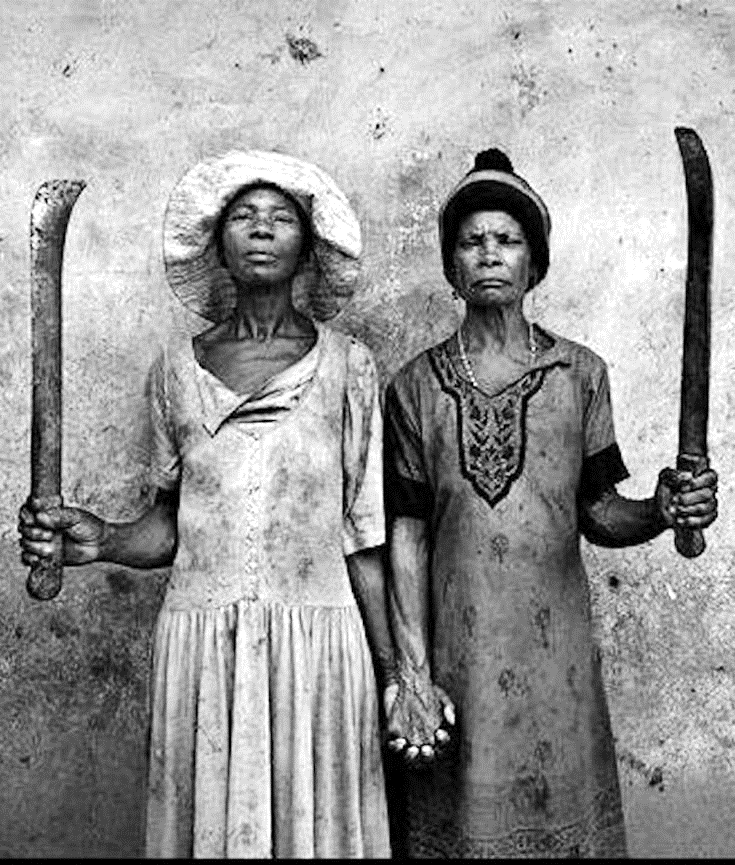
Today, Nanny is the only Maroon leader who has ascended to the rank of National Hero, the most significant recognition given by the country, and one that has earned her a spot on the Jamaican five hundred dollars ($500) note.
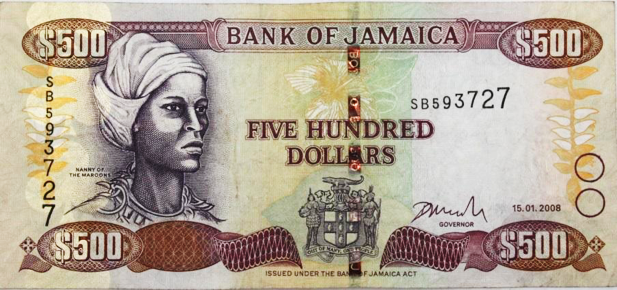


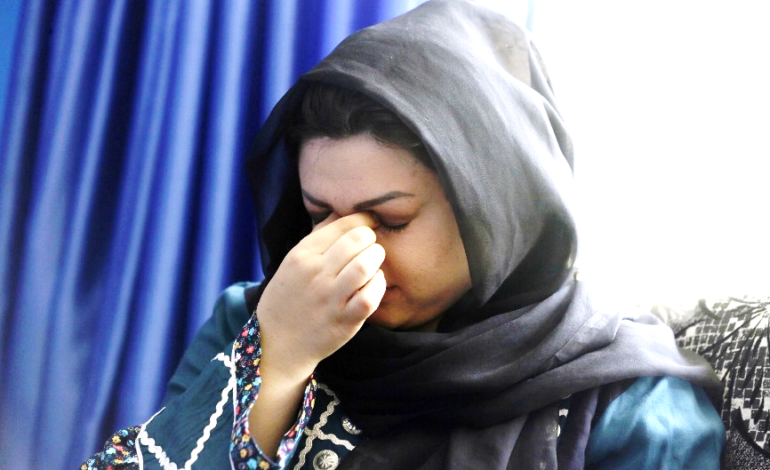


Recent Comments